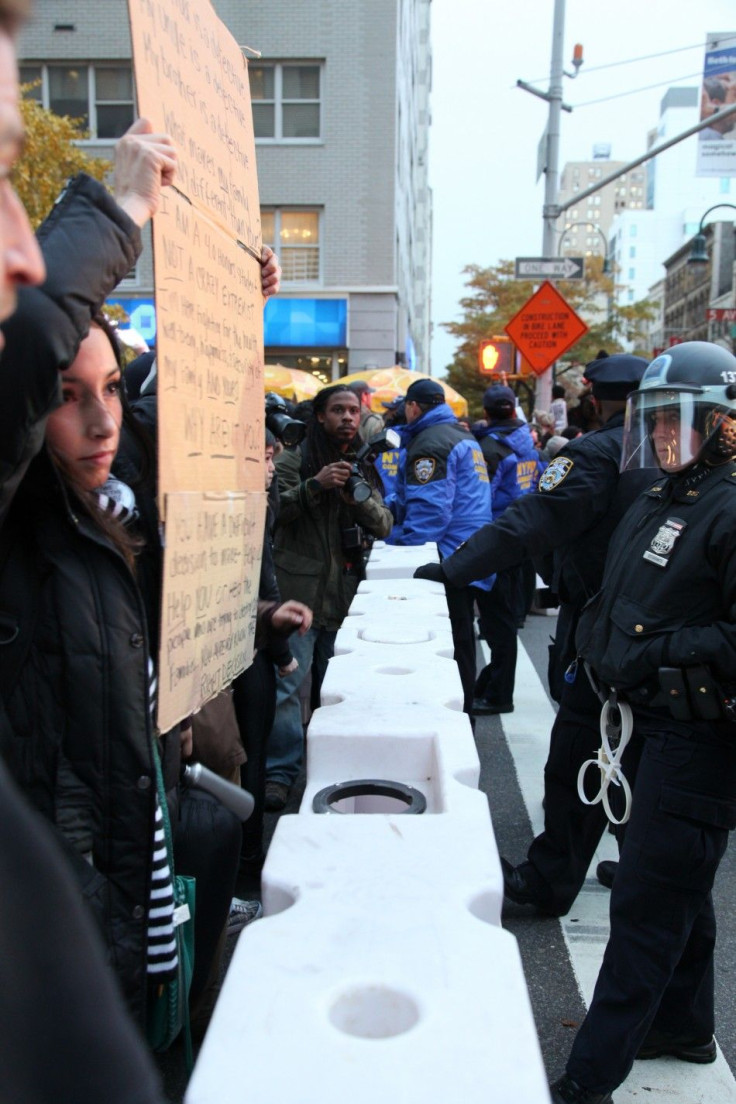Does That New 'Anti-Occupy' Bill Criminalize Protest Activity?

The Internet has been abuzz in recent days with stories about how the U.S. Congress swiftly and almost unanimously passed legislation that essentially tramples on Americans' First Amendment right to assemble. However, while HR 347, officially known as the Federal Restricted Building and Grounds Improvement Act of 2011, has been called an anti-Occupy bill that inflicts new restrictions on protesters, experts agree that those constraints have already been a part of U.S. law for years.
HR 347 -- signed into law by President Barack Obama on Thursday -- makes it a prosecutable offense to knowingly and without lawful authority enter: the White House and its grounds or the vice president's official residence and its grounds, a building or grounds where the president or other person protected by the Secret Service is temporarily visiting, or a building or grounds that is restricted due to a special event of national significance.
The law is understandably problematic for protest groups because it allows the Secret Service to designate what would normally be a public space as a restricted area to protect individuals who are under its protection, including the First Family, former national leaders and their families, presidential candidates and foreign diplomats.
After a year featuring the resurgence of an American social justice movement that has been characterized by high-profile protests, it may be unsurprising that HR 347 was pushed through Congress in 2012. As the presidential election approaches, the nation will see multiple special events of national significance, including the upcoming NATO summit in Chicago and the Democratic and Republican National Conventions, all of which are expected to attract protest groups.
Protest Restrictions in Bill Have Existed For Years
But, here's the thing -- most of HR 347 has already been law for years. The bill actually amends a trespassing law under Section 1752, title 18 of the United States Code that has existed in various forms since 1971.
Bottom line, it doesn't create any new violations of the law, said Gabe Rottman, who serves as legislative council for the American Civil Liberties Union.
Instead, it rewrites a section of the trespassing law that Rottman stressed does not directly apply to Occupy protesters alone.
The original statute already made certain behaviors within the specified areas a crime, including simple trespass, blocking the exit or entrance to a restricted area and committing actions in or near a restricted area that would disrupt the orderly conduct of Government.
Still, that doesn't mean the new legislation isn't a cause for some concern. While it may not create new violations, it does make it easier for law enforcement officials to arrest and prosecute individuals who are found to have unlawfully entered those restricted areas.
The original statute says a person must have entered one of the regulated zones knowingly and willfully for the action to qualify as a crime -- HR 347 strikes out willfully. As a result, the law essentially now renders it a crime to remain in a restricted area even if the perpetrator does not realize he or she is breaking the law by being there.
The change means it's easier to prosecute under 'knowingly,' which is an issue because someone could knowingly enter a restricted but not necessarily realize they are committing a crime, explained Mara Verheyden-Hilliard, the executive director of the Partnership for Civil Justice Fund.
The new legislation lowers the bar for prosecutors since a conviction would only require proof that a person knowingly entered a restricted area, without concern to whether the defendant realized his or her actions was unlawful.
Law enforcement is of course aware of the upsurge of the social justice movement because of Occupy, so they could be arming themselves to disrupt those demonstrations, Verheyeden-Hilliard said, who added that the arrest of approximately 6,000 peaceful protesters since the Occupy movement took off in September is indicative of the fact that it has been on law enforcement officials' radar.
Still, she said claiming the bill criminalizes protest or makes free speech a penalty, as some online campaigns against the legislation have asserted, is inaccurate. Even before the new amendment, the law allowed the Secret Service to designate what would normally be a public space as a restricted area, allowing for the federal prosecution of those who violate the law within the zone.
Aside from the altered language, the only other major change in the bill is the inclusion of the White House and grounds as fixed zones of designation. While entering the White House and its fenced-in grounds is already a federal violation, people can lawfully congregate on the sidewalk just outside the perimeter fence, a popular location for demonstration activity. According to Verheyeden-Hilliard, the government may have included this change to make it easier to prosecute protesters who step off the sidewalk to stand on a concrete ledge supporting the White House fence.
The Partnership for Civil Justice Fund will be monitoring the use of that provision to ensure the Secret Service does not use it to expand its jurisdiction to other areas in front of the White House where protesters lawfully assemble.
Although the free speech issues posed by the initial law are nothing to scoff at, the real threat of the new amendments will be determined by how it is interpreted and used by law enforcement. Therefore, the concerns raised by the passage of HR 347 needs to be contextualized against a legal backdrop that has already penalized protest activity for years.
[HR 347] has been described as a death knell for the First Amendment, but that isn't supported by the facts, Verheyden-Hilliard said. This has always been a bad law.
--
© Copyright IBTimes 2024. All rights reserved.





















